FeNO – a background and clinical practice guideline





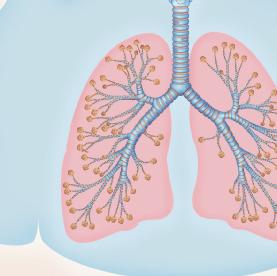



 Kjell Alving Professor of Respiratory Pharmacology Department of Women’s and Children’s Health
Kjell Alving Professor of Respiratory Pharmacology Department of Women’s and Children’s Health
Uppsala University



1
2
Background
The presence of nitric oxide (NO) in exhaled air, and elevated levels in asthma, was first described in the early 1990s.1, 2 The prevailing method recommendations were published in 2005. 3 The first instruments for measurement of the fraction of NO in exhaled air (FeNO) cleared by the US Food and Drug Administration were chemiluminescencebased but these were not suitable for routine clinical use. 4 Instead, electrochemical sensor-based instruments were soon developed, 5 and today this technology dominates. The first international clinical recommendations on how to use FeNO measurements were published by the American Thoracic Society in 2011,6 with an update in 2021.7
The European Respiratory Society recommends the use of FeNO in the diagnosis of asthma, both in children and adults. 8, 9 Furthermore, FeNO measurements are now included in several national asthma guidelines, for example, in the United Kingdom,10 and the United States.11 The Global Initiative for Asthma (GINA) guidelines recommend the use of FeNO in severe asthma.12
3
Formation of NO in the airways
Origin of exhaled NO in normal airways in the normal human respiratory tract, the activity of inducible NO synthase (iNOS) in respiratory epithelium is the primary source of NO in exhaled air,13, 14 and the expression is regulated by interferon-gamma and the upregulation of signal transducer and activator of transcription (STAT)-1 (Figure 1).15 This system may be upregulated by rhinovirus infection, and downregulated by cigarette smoking, leading to an increase and decrease in FeNO, respectively, both of which are reversible.16 However, the basal airway expression of iNOS seems to be resistant to corticosteroids.17 Some NO is also formed non-enzymatically in the pharyngo-oral tract, via reduction from nitrite.18, 19 This source of NO can be increased by intake of nitraterich food such as green-leaved vegetables (Figure 2).19 The alveolar NO concentration is normally extremely low, 20 which is probably due to the fact that NO binds rapidly and avidly to hemoglobin, gets metabolized, and does not diffuse back, which is in contrast to carbon monoxide. 21, 22 The uptake of NO in the alveolar tract seems to be reduced from middle age and up, leading to an elevated FeNO in healthy individuals in this age group. 23, 24
Elevated FeNO in asthma
Relation to type-2 inflammation
In type-2 asthma, an increased expression of iNOS is seen in the bronchial epithelium,14.25 leading to an increased amount of NO in exhaled breath. This upregulation of iNOS expression depends on the local release of the major type-2 cytokines interleukin (IL)-4 and IL-13, that act on their common receptor on respiratory epithelial cells, leading to STAT-6 activation (Figure 3).16 Non-type-2 asthma,
which is very heterogenous and with few therapeutic options, 26 will not be dealt with in this review. However, due to the heterogeneity and poor response to ordinary asthma treatment in this group, referral to a lung specialist is often called for (Figure 5).
Adaptive type-2 inflammation
The most common asthma phenotype is atopic asthma, which most often starts in childhood or adolescence. 27 In atopic asthma, T helper type 2 (Th2) cells are activated leading to immunoglobulin E (IgE) formation and type-2 inflammation through the release of IL-4, IL-5 and IL-13. 28 Furthermore, airway hyperresponsiveness (AHR) develops but asthma symptoms may be mild or even absent in spite of airway inflammation and elevated FeNO. 29 However, persistent subclinical inflammation, with elevated FeNO, is a risk factor for the later development of asthma. 30,31 Atopy is by mistake often considered a confounder for FeNO. Rather, atopy, or IgE sensitization, is a central part of the type-2 inflammation paradigm, mediated primarily by IL-4 and IL-13, 28 with a continuous subclinical to clinical process underlying (atopic) asthma. 32, 33 In atopic individuals, FeNO correlates with the degree of IgE sensitization, both in terms of IgE-antibody concentrations against single allergens as well as the number of IgE positivities.16,34 However, the relationship between levels of IgE and FeNO depends on constant and regular exposure to the relevant allergen(s), with increasing exposure causing increased FeNO,14,35-37 andviceversa , a decrease in FeNO after exposure reductions. 38-40
Innate type-2 inflammation
FeNO is commonly elevated in adult-onset eosinophilic asthma, which is often non-atopic even though total IgE may be elevated. 41, 42 In these patients, the activity of innate lymphoid cells type 2 (ILC2) may dominate over Th2 cells, or at least these cell types act in concert. 43
4
ILC2 cells are activated by a set of alarmins (IL-25, IL-33, thymic stromal lymphopoietin (TSLP)) that are released by epithelial cells after being triggered by, for example, viruses, bacteria, proteases, and pollutants. 44 ILC2 cells mainly produce IL-5 and IL-13, and much less IL-4, 45 which may explain the induction of type-2 inflammation, including elevated FeNO and eosinophilia, but not IgE sensitization, since only IL-4 is able to induce Th2-cell differentiation. 46
Relation to other inflammatory markers
Relation to eosinophils
Previously, FeNO was described as a surrogate marker of eosinophilic inflammation. 6 However, early on it was suggested that this characterization is not valid since eosinophilic inflammation is primarily driven by IL-5, in contrast to FeNO (Figure 3 and 4).16 Instead, we should recognize that FeNO and eosinophils are markers of partly separate inflammatory pathways, and that elevated FeNO and blood eosinophils may independently increase risk for asthma and asthma morbidity. 47, 48 The correlation between FeNO and sputum or blood eosinophil count is weak to moderate, whereas FeNO correlates better with the density of eosinophils within the airway wall. 29, 49, 50 In fact, FeNO has been shown to associate more closely with tissue eosinophils than sputum eosinophils. 49, 51 Eosinophil infiltration is acutely increased during asthma exacerbations induced by allergen or respiratory viruses, primarily driven by IL-5. 52, 53 Thus, elevated sputum eosinophil count may partly indicate past exacerbations (Figure 4). However, tissue eosinophil density also depends on the local formation of other cytokines and chemokines, for example, the IL13-induced upregulation of CCL26 (chemokine (C-C motif) ligand 26; eotaxin-3) in epithelial cells. This leads to the arrest and survival of
eosinophils within the tissue, which could partly explain the close correlation between tissue eosinophils and FeNO (Figure 4). 54
Relation to airway hyperresponsiveness and mast cells
Several pieces of evidence suggest a very close relationship between FeNO and tissue mast cells. The most compelling evidence is through measurement of AHR.
Bronchial provocation tests (BPT) with indirect agents (hypertonic saline, adenosine monophosphate, dry air hyperventilation, physical exercise, mannitol) is generally thought to act through the activation of mast cells in the bronchial mucosa, 55-57 and there seems to be a direct link between intraepithelial mast cells and responsiveness to indirect challenges (Figure 4). 56, 58, 59 In contrast to indirect agents, direct agents (methacholine and histamine) are thought to act mainly via a direct constrictive effect on bronchial smooth muscle. Still, results from BPT with direct agents often correlate with indirect challenges, 60 and studies have shown a correlation between direct challenges and mast cells in bronchial smooth muscle but not with intraepithelial mast cells. 56, 61
IL-13 induces the epithelial release of stem cell factor (SCF), a strong chemotactic agent that promotes the migration of mast cells, 62 providing a link between intraepithelial mast cells and IL-13 (Figure 4). However, information on the effect of anti-IL-4/IL-13 treatment on AHR is still non-conclusive. 63
So, what about FeNO? In several studies, FeNO has been shown to correlate strongly with the degree of AHR, measured with both direct and indirect agents, in patients with asthma as well as in the general population. 60, 64 However, FeNO seems to correlate more strongly with airway responsiveness to mannitol than to methacholine, 60, 64-66 which
5
is logical since methacholine responsiveness may be influenced by airway remodelling to a higher degree than indirect agents. 67, 68 FeNO has been shown to be highly predictive of mannitol reactivity in adolescents and young adults. 69 Direct evidence for a correlation between FeNO and tissue mast cells is sparse but James et al have shown a correlation between the density of mast cells in both the bronchial epithelium and smooth muscle, and FeNO. The correlation with FeNO was particularly strong for epithelial mast cells. 61
In contrast, blood eosinophil count does not correlate with the degree of AHR,70, 71 and sputum eosinophil count show variable results. 58, 59, 71 However, the density of tissue eosinophils, 59, 71 particularly intraepithelial eosinophils,72 seems to correlate well with AHR. The latter may be partly due to the simultaneous presence of intraepithelial mast cells in type-2 inflammation-activated epithelium, primarily by IL-13, leading to the release of both SCF and CCL-26 (Figure 4). 54, 62 Furthermore, mepolizumab, an IL-5 antagonist, does not reduce methacholine responsiveness, FeNO, or tissue eosinophil count, whereas blood and sputum eosinophil counts are markedly decreased. 51 Thus, FeNO, and tissue mast cell and eosinophil densities seem to associate much more closely with AHR than sputum or blood eosinophils.
Effect of asthma medications on FeNO
Corticosteroids
In mild to moderate atopic asthma, the Th2 cell is likely the dominant cell driving type-2 inflammation, and this cell type is highly sensitive to corticosteroids. 43 Thus, patients with this asthma phenotype normally respond well to treatment with an inhaled corticosteroid (ICS), with a concomitant
dose-dependent fall in FeNO.73, 74 The effect of corticosteroids on FeNO is mediated by inhibition of the transcription of IL-4 and IL-13 genes in several types of inflammatory cells (Table 1).16
In severe asthma, and particularly in adultonset, eosinophilic asthma, the innate activation of ILC2 cells is markedly increased as mentioned above, 43 and activated ILC2 cells have been shown to be corticosteroidresistant, 85 which could explain persistently high FeNO in severe asthma in spite of high doses of ICS. 50 High-dose oral corticosteroids may normalize FeNO in some, but not all, patients with severe asthma, 86, 87 whereas a normalization is generally seen in moderate asthma. 88 However, treatment with high-dose intramuscular triamcinolone seems to bring down FeNO to near-normal levels also in patients with severe asthma. 89, 90
Leukotriene-receptor antagonists
Leukotriene-receptor antagonists (LTRAs), for example montelukast, does not only block direct bronchoconstrictive effects of cysteinyl leukotrienes but also possess antiinflammatory properties. For example, these agents have been proposed to reduce the release of type-2 cytokines from Th2 cells, and to directly inhibit eosinophil chemotaxis.16, 75 Thus, LTRAs reduce FeNO in patients with asthma, although not to the same extent as ICS.91, 92 An added effect of LTRA on FeNO is seen in patients on low-dose ICS.91, 93
Biological drugs Anti-IgE
Very little information on the effect of omalizumab, an anti-IgE antibody, on FeNO is available but there seems to be a moderate reduction that develops slowly over a period
6
Table 1. Effect of different classes of asthma drugs (or drug candidates) on FeNO, and proposed mechanisms of action.
Drug class Effect on FeNO
Mechanism of action
Chromones 16 No effect -
Methylxanthines 16 No effect -
Beta-2-agonists 16 Increase in some patients
Opening up of small airways
Anticholinergics ? ?
Corticosteroids 16 Marked decrease in most patients (mild-moderate asthma)
LTRA 16,75
Slight decrease
Anti-IgE 76-78 Slowly developing moderate reduction
Inhibits release of IL-4 and IL-13
Reduces release of IL-4 and IL-13, and inhibits eosinophil chemotaxis
Inhibits mast cell activation and reduces eosinophil infiltration
Anti-IL-5 51,79 No effect -
Anti-IL-5R 79 Minor reduction
Anti-IL-13 80 Marked reduction
Anti-IL4/IL-13 81,82 Reduction to near-normal levels
Anti-TSLP 83,84 Marked reduction
Reduction of tissue eosinophils
Blocks IL-13
Blocks both IL-4 and IL-13
Reduced downstream release of IL-13
Anti-IL-25 and anti-IL-33 ? ?
LTRA = leukotriene-receptor antagonist; IgE = immunoglobulin E; IL = interleukin; R = receptor; TSLP = thymic stromal lymphopoietin.
of several months.76-78 Omalizumab inhibits the allergen-induced activation of mast cells, producers of IL-13,94 and reduces the infiltration of eosinophils that also produce IL-13.
Anti-IL-5
A recent large observational study looking at treatment with mepolizumab (anti-IL-5) or benralizumab (anti-IL-5R) showed that a reduction in FeNO could be seen after benralizumab but not mepolizumab in patients with a very high baseline FeNO (≥ 75 ppb).79 This may be explained by benralizumab being more effective in reducing tissue eosinophils compared to mepolizumab, 51, 95 and that the tissue density of eosinophils, that produce
IL-13 upon activation,96 may be especially high in patients with a very high FeNO. 49 Since the effect on FeNO by benralizumab was limited,79 this indicates that the role of eosinophils in the elevation of FeNO in asthma is minor.
Anti-IL-4/IL-13
As expected from the mechanisms behind increased FeNO in asthma outlined above, dupilumab, an IL-4/IL-13R blocking agent, has been shown to markedly reduce FeNO in patients with moderate-to-severe asthma already on moderate-to-high doses of ICS. 81 This clearly indicates the limitation of ICS in controlling type-2 inflammation in patients with more severe degrees of asthma.
7
Furthermore, dupilumab is able to bring down FeNO to an average of 15 ppb, that is to near-normal values. 24, 82 As a comparison, lebrikizumab, an IL-13 blocking agent, was able to reduce FeNO to approximately 20 ppb in a similar asthma population, 80 which indicates that while IL-13 is responsible for the major part of the upregulated NO formation in type-2 asthma, IL-4 also has a role in this upregulation.16
Anti-TSLP
The first approved drug that inhibits an alarmin, tezepelumab, an antibody directed against TSLP, has been shown to reduce both FeNO and blood eosinophil count. 83, 84 However, the effect on FeNO seemed somewhat milder than with dupilumab, 82 and the effect on blood eosinophils was not as strong as that generally seen by anti-IL-5/IL5R drugs. 51, 95 This indicates that tezepelumab, being an upstream blocking agent, does not block the activity of IL-4/IL-13 and IL-5 to the same extent as dupilumab and, for example, benralizumab, respectively, even though headto-head comparisons have not yet been made.
Clinical utility of FeNO
Aid in diagnosis of asthma
When evaluating the use of FeNO in the diagnosis of asthma, it may be important to first define the most appropriate reference test for asthma diagnosis. GINA guidelines define asthma as the presence of asthma-like symptoms together with evidence of variable expiratory airflow limitation.12 Tests for the latter include diurnal peak expiratory flow (PEF) variability, bronchodilator reversibility (BDR), and BPT. However, PEF variability has been shown to have poor diagnostic accuracy for asthma,97-99 and BDR has low sensitivity, especially in children. 8 For higher accuracy, a BPT is preferable even though these tests
are difficult to perform within primary health care. As described above, FeNO correlates strongly with AHR, especially when measured with indirect agents such as mannitol. A structured literature review and meta-analysis identified 26 studies that evaluated the accuracy of FeNO for diagnosing asthma, with BPT included as a reference test in the diagnostic algorithm.97 They found a high pooled specificity (0.82) for FeNO but a somewhat lower pooled sensitivity (0.65). The lower sensitivity may be explained by the fact that the methacholine challenge test, which was the dominating reference test in the included studies, is moderately specific for asthma, compared to indirect challenges.98, 99 Furthermore, guidance cautions that patients should be off treatment when using FeNO to support a diagnosis of asthma.100 It must also be noted that both AHR and FeNO are continuous traits across subclinical to clinical processes. 32 Thus, it may be difficult to use these markers alone to categorize subjects into having asthma or not. Instead, FeNO is probably better used as a predictor of treatment responsiveness (see below).7, 101, 102
Predicting treatment responsiveness
Corticosteroids
Elevated FeNO has been shown to predict a short-term clinical response to the introduction of ICS,102-105 with similar or better accuracy as sputum eosinophil count.103, 105 Furthermore, baseline FeNO, on a continuous scale, is almost linearly related to a better effect on exacerbations and lung function by using a higher versus a lower dose of ICS.106 A similar effect was seen for blood eosinophil count in the latter study but independent effects of the two biomarkers were not studied. In patients with severe asthma treated with moderate-to-high doses of ICS, persistently elevated FeNO predicts a response to high-dose intramuscular
8
triamcinolone in terms of improved lung function. 89 In contrast, one study could not identify a predictive effect of FeNO for a clinical response to ICS in patients with mild asthma.107
As described previously, it is clear that ICS, and even a burst of high-dose oral corticosteroids, may not be able to inhibit type-2 inflammation fully, as shown by persistently high FeNO. This may be a factor behind the mixed results of the randomized, controlled trials that have compared FeNO-guided ICS treatment with symptom-based treatment, since meta-analyses of these studies, as well as a subsequent study, have concluded that the average FeNO was not reduced in the active arms.108-110 In spite of this, FeNO-guided treatment resulted in significantly reduced exacerbation rates in both adults (seven studies) and children (nine studies).108, 109
When elevated FeNO persists in spite of prescribed ICS doses being pushed up, the first thing to check should be treatment adherence (Figure 5). A structured literature review of 17 studies on the use of FeNO for detecting non-adherence found that FeNO was generally lower in adherent compared to non-adherent patients.111 Specifically, a FeNO suppression test with directly observed, remotely or at the clinic, ICS therapy over 7 days has been shown to identify non-adherent patients.112, 113 If the patient is atopic and considered to be adherent, the degree of allergen exposure should be evaluated since excessive exposure may lead to persistently high FeNO resistant to increased ICS dosage.114-116 Instead, clinical devices for the reduction of allergen exposure in the home may reduce FeNO in ICS-treated atopic asthmatics. 39
LTRA
There are no studies that have looked at the predictive effect of elevated FeNO on the clinical response to LTRA treatment. However, since studies have shown an additive effect on FeNO by the addition of an LTRA to low-dose ICS treatment, this may be an alternative to stepping up the ICS dose if FeNO remains elevated.91, 93
Biologicals
Elevated FeNO has been shown to be somewhat predictive of a clinical response to omalizumab, similar to blood eosinophil count,117 whereas a response to anti-IL-5/ IL-5R agents is considered to be independent of baseline FeNO.79, 118 In contrast, elevated FeNO is highly predictive of a clinical response to dupilumab, both in terms of a reduction in exacerbation rates and improvement in lung function, 81 and the predictive effect of FeNO is independent of blood eosinophil count and several confounders.119 This is logical considering the underlying mechanism for NO formation in type-2 inflammation described above.120 One study has shown that the clinical response to tezepelumab was not clearly related to baseline levels of several type-2 biomarkers, including FeNO and blood eosinophil count .121
Proposed clinical algorithm
Thus, FeNO may be utilized as follows in the work-up of a patient with asthma or suspected asthma:
1. Elevated FeNO supports a diagnosis of (type-2) asthma, and can be used as an alternative to BPT, particularly with indirect challenges (mannitol, physical exercise).
2. In a patient where asthma treatment is considered and FeNO is elevated: start ICS treatment according to guidelines (Figure 5).
9
3. Follow up with FeNO measurement after at least two weeks (for full effect on FeNO) but preferably no more than 8 weeks (since lack of effect on FeNO indicates the need for different treatment or advice, see point 4).
4. If FeNO is normalized: continue treatment. If FeNO is not normalized: consider treatment adherence, inhalation technique, allergen exposure, increase ICS or add LTRA.
5. If elevated FeNO and/or symptoms persist: consider referral to lung or allergy specialist for the possible further step-up of treatment, including biological drugs.
Confounders
A set of factors have been shown to influence FeNO in the individual patient.122 Some of these factors may confound the interpretation of FeNO and should be paid attention to in the clinic. Confounders can be described as factors not easily identified in the clinic and with an unpredictable effect on FeNO. These confounders are summarized in Table 2. However, some of the factors known to affect FeNO should be regarded as determinants, similar to the factors that influence
spirometric measures in an individual (see Future development). These factors are easily recorded in the clinic and have a predictable effect on FeNO.122
Future development
There is one area with regards to the clinical use of FeNO where there is a particular need of research and development. It is well-known that some individual characteristics affect FeNO, and the most important ones are age, height and sex.16, 122 Recent guidelines have identified the difficulties in using the prevailing recommended cut-offs ,6, 7 and, thus, a need to refine these cut-offs.11 Linear reference equations for FeNO have previously been published based on healthy populations.125 However, the evolution of FeNO by age has been shown to be non-linear, 24 and the use of more sophisticated non-linear models have been suggested ,126 similar to models used for spirometry (Global Lung Function Initiative; GLI). An ERS Task Force is presently working on the collection of FeNO data globally to be able to make available reference equations based on these models.
Table 2. Clinically important confounding factors for FeNO measurements, their approximate effect size, and advice on how to manage these in clinical practice.
Factor Effect
Cigarette smoking (normal FeNO in ex-smokers) 123
Rhinovirus infections (not other viral or bacterial infections) 16
Intake of nitrate-containing food (for example green-leaved vegetables and beetroot)19
Repeated spirometry/physical exercise immediately prior to FeNO measurement 3
Bronchoconstriction/acute asthma 124
Reduction up to 60%, dependent on daily cigarette consumption
Increase of 50–150%
Increase of up to 60%, with peak 1–2 hours after intake
Measure
Use intraindividual changes, for example after introduction of anti-inflammatory therapy
Repeat measurement after at least 14 days
Ask patients to refrain from a meal consisting primarily of greenleaved vegetables on the day of assessment, or at least record such intake
May cause a small reduction in FeNO (≈ 10%)
FeNO may be reduced during bronchoconstriction, for example in acute asthma
Perform FeNO measurement before spirometry. Ask patients to refrain from strenuous physical exercise immediately prior to clinic visit
Perform FeNO measurement in clinically stable condition or after bronchodilator
10
size
Figures
Figure 1. Putative mechanisms underlying normal NO formation in the human respiratory epithelium, and, thus, FeNO in healthy individuals.
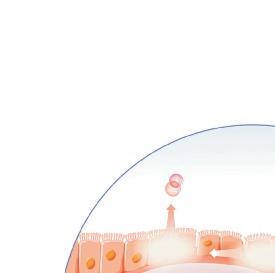
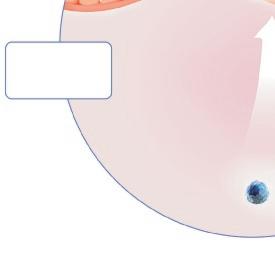
Corticosteroidresistant mechanism
Exhaled
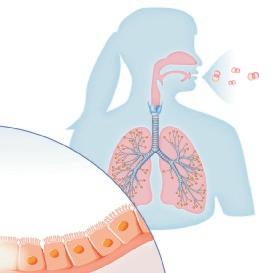
Upregulated by rhinovirus infection and downregulated by cigarette smoking
Homeostatic:

Th1: T helper type 1
IFN: interferon
iNOS: indicible NO synthase
STAT: signal transducer and activator of transcription
12
γ
IFN-
Th1 cells
STAT-1 NO
Macrophages
air FeNO
iNOS
Figure 2. Gross anatomical origin of airway NO in a healthy individual, relative contribution to FeNO, and methodological implications.
Approximate NO levels (relative contribution to FeNO)

Nasal cavity, sinuses
High NO (0%)
Mouth, pharynx
Intermediate NO (40%)
Lower airways
Intermediate NO (55–60%)

Alveolar tract
Low NO (2.5%)

Methodological implications
Ascertain velum closure → exhale at a pressure ≥ 5 cmH20
Nitrate ingestion elevates FeNO → avoid or record intake of nitrate-rich vegetables
FeNO is flowdependent → exhale at a steady flow rate of 50 ml/s
Inhaled NO is rapidly absorbed and binds to hemoglobin (impaired in elderly) → age-adjust FeNO cut-offs
13
Figure 3. Inflammatory mechanisms driving elevated FeNO and other clinically used type-2 inflammatory markers (blood eosinophil count and IgE) in asthma.
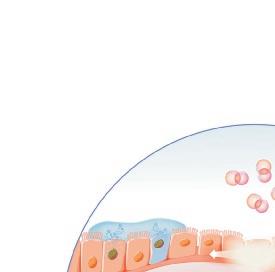
Mucus AHR AR
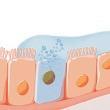
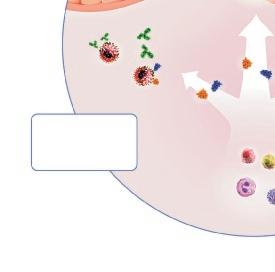

Exhaled air FeNO
Upregulated by allergen exposure and innate signalling (viruses, particles etc) Partly corticosteroid-sensitive mechanism Th2 cells
Inflammatory:
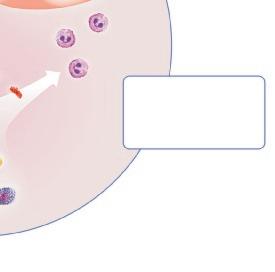
Th2: T helper type 2
ILC: innate lymphoid cells
STAT: signal transducer and activator of transcription
iNOS: inducible NO synthase
IL: interleukin
IgE: immunoglobulin E
AHR: airway hyperresponsiveness
AR: airway remodelling
14
Eosinophils
Eosinophils
IgE antibodies
IL-4 IL-13 IL-4 IL-13 IL-5
STAT-6
B cells
Mast cells ILC2 cells
NO
iNOS
Figure 4 . Simplified scheme of inflammatory mechanisms explaining the close association between FeNO and AHR, and eosinophils with (severe) asthma exacerbations, respectively.
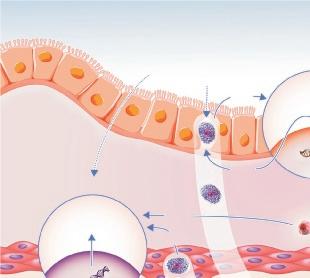
Airway lumen
Epithelium
Smooth muscle
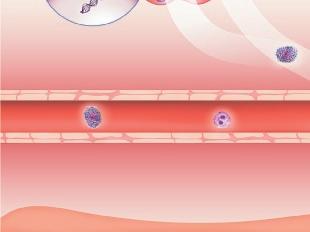
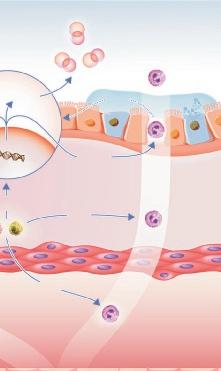
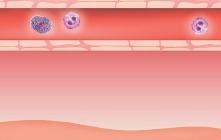
Th2: T helper type 2
ILC: innate lymphoid cell
iNOS: inducible NO synthase
IL: interleukin
SCF: stem cell factor
CCL26: chemokine (C-C motif) ligand 26 (eotaxin-3)
AHR: airway hyperresponsiveness
15
Exacerbations AHR NO Direct agents Increased contractility Indirect agents SCF iNOS IL-13 IL-13 IL-13 IL-13 IL-5 IL-5 CCL26 Mast cell Mast
progenitor Eosinophil Eosinophil IL-13
cell
Lamina propria
Submucosa
Submucosa
Th2 cell ILC2 cell
Figure 5. Clinical decision support tool based on FeNO measurement (and allergy testing) for the use in primary health care.
IgE-negative

FeNO
Consider referral for differential diagnosis
IgE-positive or IgE-negative
Initial visit (treatment-naive)

Time
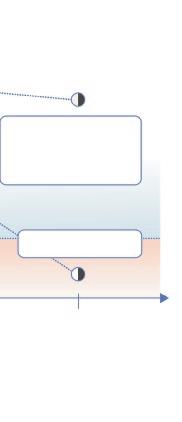
Consider adherence, inhalation technique and allergen exposure, increase ICS, add LTRA
Elevated Continue treatment
Individualized cut-off
Normal
Follup-up (2–8 weeks after treatment adjustment)
ICS: inhaled corticosteroid
LTRA: leukotriene-receptor antagonist
IgE: immunoglobulin E
16
References
1. Gustafsson LE, Leone AM, Persson MG, Wiklund NP, Moncada S. Endogenous nitric oxide is present in the exhaled air of rabbits, guinea pigs and humans. Biochem Biophys Res Commun 1991; 181:852-7.
2. Alving K, Weitzberg E, Lundberg JM. Increased amount of nitric oxide in exhaled air of asthmatics. Eur Respir J 1993; 6:1368-70.
3. Anonymous. ATS/ERS Recommendations for Standardized Procedures for the Online and Offline Measurement of Exhaled Lower Respiratory Nitric Oxide and Nasal Nitric Oxide, 2005. Am J Respir Crit Care Med 2005; 171:912-30.
4. Silkoff PE, Carlson M, Bourke T, Katial R, Ogren E, Szefler SJ. The Aerocrine exhaled nitric oxide monitoring system NIOX is cleared by the US Food and Drug Administration for monitoring therapy in asthma. J Allergy Clin Immunol 2004; 114:1241-56.
5. Alving K, Janson C, Nordvall L. Performance of a new hand-held device for exhaled nitric oxide measurement in adults and children. Respir Res 2006; 7:67.
6. Dweik RA, Boggs PB, Erzurum SC, Irvin CG, Leigh MW, Lundberg JO, et al. An official ATS clinical practice guideline: interpretation of exhaled nitric oxide levels (FENO) for clinical applications. Am J Respir Crit Care Med 2011; 184:602-15.
7. Khatri SB, Iaccarino JM, Barochia A, Soghier I, Akuthota P, Brady A, et al. Use of Fractional Exhaled Nitric Oxide to Guide the Treatment of Asthma: An Official American Thoracic Society Clinical Practice Guideline. Am J Respir Crit Care Med 2021; 204:e97-e109.
8. Gaillard EA, Kuehni CE, Turner S, Goutaki M, Holden KA, de Jong CCM, et al. European Respiratory Society clinical practice guidelines for the diagnosis of asthma in children aged 5-16 years. Eur Respir J 2021; 58.
9. Louis R, Satia I, Ojanguren I, Schleich F, Bonini M, Tonia T, et al. European Respiratory Society Guidelines for the Diagnosis of Asthma in Adults. Eur Respir J 2022.
10. Asthma: diagnosis, monitoring and chronic asthma management (NICE Guideline, 2017).].
11. Expert Panel Working Group of the National Heart L, Blood Institute a, coordinated National Asthma E, Prevention Program Coordinating C, Cloutier MM, Baptist AP, et al. 2020 Focused Updates to the Asthma Management Guidelines: A Report from the National Asthma Education and Prevention Program Coordinating Committee Expert Panel Working Group. J Allergy Clin Immunol 2020; 146:1217-70.
12. Global Initiative for Asthma. Global Strategy for Asthma Management and Prevention, 2023.].
13. Lane C, Knight D, Burgess S, Franklin P, Horak F, Legg J, et al. Epithelial inducible nitric oxide synthase activity is the major determinant of nitric oxide concentration in exhaled breath. Thorax 2004; 59:757-60.
14. Roos AB, Mori M, Gronneberg R, Osterlund C, Claesson HE, Wahlstrom J, et al. Elevated exhaled nitric oxide in allergen-provoked asthma is associated with airway epithelial iNOS. PLoS One 2014; 9:e90018.
15. Guo FH, Uetani K, Haque SJ, Williams BR, Dweik RA, Thunnissen FB, et al. Interferon gamma and interleukin 4 stimulate prolonged expression of inducible nitric oxide synthase in human airway epithelium through synthesis of soluble mediators. J Clin Invest 1997; 100:829-38.
16. Alving K, Malinovschi A. Basic aspects of exhaled nitric oxide. Eur Respir Monograph 2010; 49:1-31.
17. Lundberg JO, Weitzberg E, Rinder J, Rudehill A, Jansson O, Wiklund NP, et al. Calcium-independent and steroid-resistant nitric oxide synthase activity in human paranasal sinus mucosa. Eur Respir J 1996; 9:1344-7.
18. Lundberg JO, Weitzberg E, Lundberg JM, Alving K. Intragastric nitric oxide production in humans: measurements in expelled air. Gut 1994; 35:1543-6.
19. Zetterquist W, Pedroletti C, Lundberg JO, Alving K. Salivary contribution to exhaled nitric oxide. Eur Respir J 1999; 13:327-33.
20. Malinovschi A, Janson C, Holm L, Nordvall L, Alving K. Basal and induced NO formation in the pharyngo-oral tract influences estimates of alveolar NO levels. J Appl Physiol 2009; 106:513-9.
21. Borland CD, Higenbottam TW. A simultaneous single breath measurement of pulmonary diffusing capacity with nitric oxide and carbon monoxide. Eur Respir J 1989; 2:56-63.
22. Zetterquist W, Marteus H, Johannesson M, Nordval SL, Ihre E, Lundberg JO, et al. Exhaled carbon monoxide is not elevated in patients with asthma or cystic fibrosis. Eur Respir J 2002; 20:92-9.
23. Gelb AF, George SC, Camacho F, Fraser C, Flynn Taylor C, Shakkottai S. Increased nitric oxide concentrations in the small airway of older normal subjects. Chest 2011; 139:368-75.
24. Jacinto T, Malinovschi A, Janson C, Fonseca J, Alving K. Evolution of exhaled nitric oxide levels throughout development and aging of healthy humans. J Breath Res 2015; 9:036005.
25. Redington AE, Meng QH, Springall DR, Evans TJ, Creminon C, Maclouf J, et al. Increased expression of inducible nitric oxide synthase and cyclo-oxygenase-2 in the airway epithelium of asthmatic subjects and regulation by corticosteroid treatment. Thorax 2001; 56:351-7.
26. Diamant Z, Vijverberg S, Alving K, Bakirtas A, Bjermer L, Custovic A, et al. Toward clinically applicable biomarkers for asthma: An EAACI position paper. Allergy 2019; 74:1835-51.
27. Wenzel SE. Asthma phenotypes: the evolution from clinical to molecular approaches. Nat Med 2012; 18:716-25.
17
28. Durrant DM, Metzger DW. Emerging roles of T helper subsets in the pathogenesis of asthma. Immunol Invest 2010; 39:526-49.
29. van den Toorn LM, Overbeek SE, de Jongste JC, Leman K, Hoogsteden HC, Prins JB. Airway inflammation is present during clinical remission of atopic asthma. Am J Respir Crit Care Med 2001; 164:2107-13.
30. Olin AC, Rosengren A, Thelle DS, Lissner L, Toren K. Increased fraction of exhaled nitric oxide predicts new-onset wheeze in a general population. Am J Respir Crit Care Med 2010; 181:324-7.
31. Bastain TM, Islam T, Berhane KT, McConnell RS, Rappaport EB, Salam MT, et al. Exhaled nitric oxide, susceptibility and new-onset asthma in the Children’s Health Study. Eur Respir J 2011; 37:523-31.
32. Schoos AM, Chawes BLK, Bonnelykke K, Bisgaard H. Fraction of exhaled nitric oxide and bronchial responsiveness are associated and continuous traits in young children independent of asthma. Chest 2012; 142:1562-8.
33. Tsolakis N, Malinovschi A, Nordvall L, Janson C, Borres MP, Alving K. The absence of serum IgE antibodies indicates non-type 2 disease in young asthmatics. Clin Exp Allergy 2018; 48:722-30.
34. Zaigham S, Zhou X, Molin M, Sjolander A, Moverare R, Janson C, et al. Importance of type and degree of IgE sensitisation for defining fractional exhaled nitric oxide reference values. Respir Med 2021; 188:106621.
35. Ihre E, Gyllfors P, Gustafsson LE, Kumlin M, Dahlen B. Early rise in exhaled nitric oxide and mast cell activation in repeated low-dose allergen challenge. Eur Respir J 2006; 27:1152-9.
36. Langley SJ, Goldthorpe S, Craven M, Morris J, Woodcock A, Custovic A. Exposure and sensitization to indoor allergens: association with lung function, bronchial reactivity, and exhaled nitric oxide measures in asthma. J Allergy Clin Immunol 2003; 112:362-8.
37. Vahlkvist S, Sinding M, Skamstrup K, Bisgaard H. Daily home measurements of exhaled nitric oxide in asthmatic children during natural birch pollen exposure. J Allergy Clin Immunol 2006; 117:1272-6.
38. Bodini A, Peroni D, Loiacono A, Costella S, Pigozzi R, Baraldi E, et al. Exhaled nitric oxide daily evaluation is effective in monitoring exposure to relevant allergens in asthmatic children. Chest 2007; 132:1520-5.
39. Boyle RJ, Pedroletti C, Wickman M, Bjermer L, Valovirta E, Dahl R, et al. Nocturnal temperature controlled laminar airflow for treating atopic asthma: a randomised controlled trial. Thorax 2012; 67:215-21.
40. Kaminsky DA, Rice AA, Bissonette M, Larose T, Phillips L, Cohen L, et al. Exhaled nitric oxide decreases in association with attendance at an asthma summer cAMP. J Asthma 2008; 45:415-9.
41. de Groot JC, Ten Brinke A, Bel EH. Management of the patient with eosinophilic asthma: a new era begins. ERJ Open Res 2015; 1.
42. Gerday S, Schleich F, Henket M, Guissard F, Paulus V, Louis R. Asthmatics with concordant eosinophilic disease classified according to their serum IgE status. Respir Med Res 2021; 79:100797.
43. Smith SG, Chen R, Kjarsgaard M, Huang C, Oliveria JP, O’Byrne PM, et al. Increased numbers of activated group 2 innate lymphoid cells in the airways of patients with severe asthma and persistent airway eosinophilia. J Allergy Clin Immunol 2016; 137:75-86 e8.
44. DeKruyff RH, Yu S, Kim HY, Umetsu DT. Innate immunity in the lung regulates the development of asthma. Immunol Rev 2014; 260:235-48.
45. Keegan AD, Leonard WJ, Zhu J. Recent advances in understanding the role of IL-4 signaling. Fac Rev 2021; 10:71.
46. Zhu J. T helper 2 (Th2) cell differentiation, type 2 innate lymphoid cell (ILC2) development and regulation of interleukin-4 (IL-4) and IL-13 production. Cytokine 2015; 75:14-24.
47. Malinovschi A, Fonseca JA, Jacinto T, Alving K, Janson C. Exhaled nitric oxide levels and blood eosinophil counts independently associate with wheeze and asthma events in National Health and Nutrition Examination Survey subjects. J Allergy Clin Immunol 2013; 132:821-7 e5.
48. Malinovschi A, Janson C, Borres M, Alving K. Simultaneously increased fraction of exhaled nitric oxide levels and blood eosinophil counts relate to increased asthma morbidity. J Allergy Clin Immunol 2016; 138:1301-8 e2.
49. Lemiere C, Ernst P, Olivenstein R, Yamauchi Y, Govindaraju K, Ludwig MS, et al. Airway inflammation assessed by invasive and noninvasive means in severe asthma: eosinophilic and noneosinophilic phenotypes. J Allergy Clin Immunol 2006; 118:1033-9.
50. Silkoff PE, Lent AM, Busacker AA, Katial RK, Balzar S, Strand M, et al. Exhaled nitric oxide identifies the persistent eosinophilic phenotype in severe refractory asthma. J Allergy Clin Immunol 2005; 116:1249-55.
51.Haldar P, Brightling CE, Hargadon B, Gupta S, Monteiro W, Sousa A, et al. Mepolizumab and exacerbations of refractory eosinophilic asthma. N Engl J Med 2009; 360:973-84.
52. O’Byrne PM, Inman MD, Parameswaran K. The trials and tribulations of IL-5, eosinophils, and allergic asthma. J Allergy Clin Immunol 2001; 108:503-8.
53. Nakagome K, Nagata M. Innate Immune Responses by Respiratory Viruses, Including Rhinovirus, During Asthma Exacerbation. Front Immunol 2022; 13:865973.
54. Silkoff PE, Laviolette M, Singh D, FitzGerald JM, Kelsen S, Backer V, et al. Identification of airway mucosal type 2 inflammation by using clinical biomarkers in asthmatic patients. J Allergy Clin Immunol 2017; 140:710-9.
55. Anderson SD. Indirect challenge tests: Airway hyperresponsiveness in asthma: its measurement and clinical significance. Chest 2010; 138:25S-30S.
18
56. Lai Y, Altemeier WA, Vandree J, Piliponsky AM, Johnson B, Appel CL, et al. Increased density of intraepithelial mast cells in patients with exercise-induced bronchoconstriction regulated through epithelially derived thymic stromal lymphopoietin and IL-33. J Allergy Clin Immunol 2014; 133:1448-55.
57. Wang G, Baines KJ, Fu JJ, Wood LG, Simpson JL, McDonald VM, et al. Sputum mast cell subtypes relate to eosinophilia and corticosteroid response in asthma. Eur Respir J 2016; 47:1123-33.
58. Fricker M, Qin L, Niessen N, Baines KJ, McDonald VM, Scott HA, et al. Relationship of sputum mast cells with clinical and inflammatory characteristics of asthma. Clin Exp Allergy 2020; 50:696-707.
59. Gibson PG, Saltos N, Borgas T. Airway mast cells and eosinophils correlate with clinical severity and airway hyperresponsiveness in corticosteroid-treated asthma. J Allergy Clin Immunol 2000; 105:752-9.
60. Porsbjerg C, Brannan JD, Anderson SD, Backer V. Relationship between airway responsiveness to mannitol and to methacholine and markers of airway inflammation, peak flow variability and quality of life in asthma patients. Clin Exp Allergy 2008; 38:43-50.
61. James A, Gyllfors P, Henriksson E, Dahlen SE, Adner M, Nilsson G, et al. Corticosteroid treatment selectively decreases mast cells in the smooth muscle and epithelium of asthmatic bronchi. Allergy 2012; 67:958-61.
62. Dougherty RH, Sidhu SS, Raman K, Solon M, Solberg OD, Caughey GH, et al. Accumulation of intraepithelial mast cells with a unique protease phenotype in T(H)2high asthma. J Allergy Clin Immunol 2010; 125:1046-53 e8.
63. Spahn JD, Brightling CE, O’Byrne PM, Simpson LJ, Molfino NA, Ambrose CS, et al. Effect of Biologic Therapies on Airway Hyperresponsiveness and Allergic Response: A Systematic Literature Review. J Asthma Allergy 2023; 16:755-74.
64. Sverrild A, Porsbjerg C, Thomsen SF, Backer V. Airway hyperresponsiveness to mannitol and methacholine and exhaled nitric oxide: a random-sample population study. J Allergy Clin Immunol 2010; 126:952-8.
65. Park YA, Park HB, Kim YH, Sul IS, Yoon SH, Kim HR, et al. Airway hyperresponsiveness to mannitol and methacholine and exhaled nitric oxide in children with asthma. J Asthma 2017; 54:644-51.
66. Perzanowski MS, Yoo Y. Exhaled Nitric Oxide and Airway Hyperresponsiveness to Adenosine 5’-monophosphate and Methacholine in Children with Asthma. Int Arch Allergy Immunol 2015; 166:107-13.
67. Crimi E, Spanevello A, Neri M, Ind PW, Rossi GA, Brusasco V. Dissociation between airway inflammation and airway hyperresponsiveness in allergic asthma. Am J Respir Crit Care Med 1998; 157:4-9.
68.Gronke L, Kanniess F, Holz O, Jorres RA, Magnussen H. The relationship between airway hyper-responsi-
veness, markers of inflammation and lung function depends on the duration of the asthmatic disease. Clin Exp Allergy 2002; 32:57-63.
69. Sverrild A, Malinovschi A, Porsbjerg C, Backer V, Alving K. Predicting airway hyperreactivity to mannitol using exhaled nitric oxide in an unselected sample of adolescents and young adults. Respir Med 2013; 107:150-2.
70. Schwartz N, Grossman A, Levy Y, Schwarz Y. Correlation between eosinophil count and methacholine challenge test in asymptomatic subjects. J Asthma 2012; 49:336-41.
71. Sverrild A, Bergqvist A, Baines KJ, Porsbjerg C, Andersson CK, Thomsen SF, et al. Airway responsiveness to mannitol in asthma is associated with chymase-positive mast cells and eosinophilic airway inflammation. Clin Exp Allergy 2016; 46:288-97.
72. Al-Shaikhly T, Murphy RC, Parker A, Lai Y, Altman MC, Larmore M, et al. Location of eosinophils in the airway wall is critical for specific features of airway hyperresponsiveness and T2 inflammation in asthma. Eur Respir J 2022; 60.
73. Anderson WJ, Short PM, Williamson PA, Lipworth BJ. Inhaled corticosteroid dose response using domiciliary exhaled nitric oxide in persistent asthma: the FENOtype trial. Chest 2012; 142:1553-61.
74. Nolte H, Pavord I, Backer V, Spector S, Shekar T, Gates D, et al. Dose-dependent anti-inflammatory effect of inhaled mometasone furoate/formoterol in subjects with asthma. Respir Med 2013; 107:656-64.
75. Tohda Y, Nakahara H, Kubo H, Haraguchi R, Fukuoka M, Nakajima S. Effects of ONO-1078 (pranlukast) on cytokine production in peripheral blood mononuclear cells of patients with bronchial asthma. Clin Exp Allergy 1999; 29:1532-6.
76. Mirra V, Montella S, Santamaria F. Pediatric severe asthma: a case series report and perspectives on antiIgE treatment. BMC Pediatr 2018; 18:73.
77. Ramonell RP, Lee FE, Levy JM, Kuruvilla M. Exhaled nitric oxide measurements are not influenced by anti-eosinophil therapy in patients with asthma: A retrospective analysis. Ann Allergy Asthma Immunol 2021; 126:102-4.
78. Silkoff PE, Romero FA, Gupta N, Townley RG, Milgrom H. Exhaled nitric oxide in children with asthma receiving Xolair (omalizumab), a monoclonal anti-immunoglobulin E antibody. Pediatrics 2004; 113:e308-12.
79. Hearn AP, Kavanagh J, d’Ancona G, Roxas C, Green L, Thomson L, et al. The relationship between Feno and effectiveness of mepolizumab and benralizumab in severe eosinophilic asthma. J Allergy Clin Immunol Pract 2021; 9:2093-6 e1.
80. Corren J, Lemanske RF, Hanania NA, Korenblat PE, Parsey MV, Arron JR, et al. Lebrikizumab treatment in adults with asthma. N Engl J Med 2011; 365:1088-98.
19
81. Castro M, Corren J, Pavord ID, Maspero J, Wenzel S, Rabe KF, et al. Dupilumab Efficacy and Safety in Moderate-to-Severe Uncontrolled Asthma. N Engl J Med 2018; 378:2486-96.
82. Corren J, Castro M, O’Riordan T, Hanania NA, Pavord ID, Quirce S, et al. Dupilumab Efficacy in Patients with Uncontrolled, Moderate-to-Severe Allergic Asthma. J Allergy Clin Immunol Pract 2020; 8:516-26.
83. Diver S, Khalfaoui L, Emson C, Wenzel SE, Menzies-Gow A, Wechsler ME, et al. Effect of tezepelumab on airway inflammatory cells, remodelling, and hyperresponsiveness in patients with moderate-to-severe uncontrolled asthma (CASCADE): a double-blind, randomised, placebo-controlled, phase 2 trial. The Lancet Respiratory Medicine 2021; 9:1299-312.
84. Menzies-Gow A, Corren J, Bourdin A, Chupp G, Israel E, Wechsler ME, et al. Tezepelumab in Adults and Adolescents with Severe, Uncontrolled Asthma. N Engl J Med 2021; 384:1800-9.
85. van der Ploeg EK, Golebski K, van Nimwegen M, Fergusson JR, Heesters BA, Martinez-Gonzalez I, et al. Steroid-resistant human inflammatory ILC2s are marked by CD45RO and elevated in type 2 respiratory diseases. Sci Immunol 2021; 6.
86. Khoo SM, Lim TK. Effects of inhaled versus systemic corticosteroids on exhaled nitric oxide in severe acute asthma. Respir Med 2009; 103:614-20.
87. van der Schee MP, Palmay R, Cowan JO, Taylor DR. Predicting steroid responsiveness in patients with asthma using exhaled breath profiling. Clin Exp Allergy 2013; 43:1217-25.
88. Smith AD, Cowan JO, Taylor DR. Exhaled nitric oxide levels in asthma: Personal best versus reference values. J Allergy Clin Immunol 2009; 124:714-8 e4.
89. Phipatanakul W, Mauger DT, Sorkness RL, Gaffin JM, Holguin F, Woodruff PG, et al. Effects of Age and Disease Severity on Systemic Corticosteroid Responses in Asthma. Am J Respir Crit Care Med 2017; 195:1439-48.
90. ten Brinke A, Zwinderman AH, Sterk PJ, Rabe KF, Bel EH. ”Refractory” eosinophilic airway inflammation in severe asthma: effect of parenteral corticosteroids. Am J Respir Crit Care Med 2004; 170:601-5.
91. Bisgaard H, Loland L, Oj JA. NO in exhaled air of asthmatic children is reduced by the leukotriene receptor antagonist montelukast. Am J Respir Crit Care Med 1999; 160:1227-31.
92. Montuschi P, Mondino C, Koch P, Ciabattoni G, Barnes PJ, Baviera G. Effects of montelukast treatment and withdrawal on fractional exhaled nitric oxide and lung function in children with asthma. Chest 2007; 132:1876-81.
93. Kononowa N, Michel S, Miedinger D, Pichler CE, Chhajed PN, Helbling A, et al. Effects of add-on montelukast on airway hyperresponsiveness in patients with well-controlled asthma - a pilot study. J Drug Assess 2013; 2:49-57.
94. Altman MC, Lai Y, Nolin JD, Long S, Chen CC, Piliponsky AM, et al. Airway epithelium-shifted mast cell infiltration regulates asthmatic inflammation via IL-33 signaling. J Clin Invest 2019; 129:4979-91.
95. Laviolette M, Gossage DL, Gauvreau G, Leigh R, Olivenstein R, Katial R, et al. Effects of benralizumab on airway eosinophils in asthmatic patients with sputum eosinophilia. J Allergy Clin Immunol 2013; 132:1086-96 e5.
96. Uchida AM, Ro G, Qiang L, Peterson KA, Round J, Dougan M, et al. Human differentiated eosinophils release IL-13 in response to IL-33 stimulation. Front Immunol 2022; 13:946643.
97. Karrasch S, Linde K, Rucker G, Sommer H, KarschVolk M, Kleijnen J, et al. Accuracy of FENO for diagnosing asthma: a systematic review. Thorax 2017; 72:109-16.
98. Coates AL, Wanger J, Cockcroft DW, Culver BH, Bronchoprovocation Testing Task Force: Kai-Hakon C, Diamant Z, et al. ERS technical standard on bronchial challenge testing: general considerations and performance of methacholine challenge tests. Eur Respir J 2017; 49.
99. Hallstrand TS, Leuppi JD, Joos G, Hall GL, Carlsen KH, Kaminsky DA, et al. ERS technical standard on bronchial challenge testing: pathophysiology and methodology of indirect airway challenge testing. Eur Respir J 2018; 52.
100. Lipworth B, Kuo CR, Chan R. 2020 Updated Asthma Guidelines: Clinical utility of fractional exhaled nitric oxide (Feno) in asthma management. J Allergy Clin Immunol 2020; 146:1281-2.
101. Alving K. FeNO and suspected asthma: better to identify responsiveness to treatment than to label with a diagnosis. Lancet Respir Med 2018; 6:3-5.
102. Martin MJ, Wilson E, Gerrard-Tarpey W, Meakin G, Hearson G, McKeever TM, et al. The utility of exhaled nitric oxide in patients with suspected asthma. Thorax 2016; 71:562-4.
103. Cowan DC, Cowan JO, Palmay R, Williamson A, Taylor DR. Effects of steroid therapy on inflammatory cell subtypes in asthma. Thorax 2010; 65:384-90.
104. Price DB, Buhl R, Chan A, Freeman D, Gardener E, Godley C, et al. Fractional exhaled nitric oxide as a predictor of response to inhaled corticosteroids in patients with non-specific respiratory symptoms and insignificant bronchodilator reversibility: a randomised controlled trial. Lancet Respir Med 2018; 6:29-39.
105. Smith AD, Cowan JO, Brassett KP, Filsell S, McLachlan C, Monti-Sheehan G, et al. Exhaled nitric oxide: a predictor of steroid response. Am J Respir Crit Care Med 2005; 172:453-9.
106. Lee LA, Bailes Z, Barnes N, Boulet L-P, Edwards D, Fowler A, et al. Efficacy and safety of once-daily single-inhaler triple therapy (FF/UMEC/VI) versus FF/VI in patients with inadequately controlled asthma (CAPTAIN): a double-blind, randomised, phase 3A trial. The Lancet Respiratory Medicine 2021; 9:69-84.
20
107. Pavord ID, Holliday M, Reddel HK, Braithwaite I, Ebmeier S, Hancox RJ, et al. Predictive value of blood eosinophils and exhaled nitric oxide in adults with mild asthma: a prespecified subgroup analysis of an open-label, parallel-group, randomised controlled trial. The Lancet Respiratory Medicine 2020; 8:671-80.
108. Petsky HL, Kew KM, Chang AB. Exhaled nitric oxide levels to guide treatment for children with asthma. Cochrane Database Syst Rev 2016; 11:CD011439.
109. Petsky HL, Kew KM, Turner C, Chang AB. Exhaled nitric oxide levels to guide treatment for adults with asthma. Cochrane Database Syst Rev 2016; 9:CD011440.
110. Turner S, Cotton S, Wood J, Bell V, Raja EA, Scott NW, et al. Reducing asthma attacks in children using exhaled nitric oxide (RAACENO) as a biomarker to inform treatment strategy: a multicentre, parallel, randomised, controlled, phase 3 trial. Lancet Respir Med 2022; 10:584-92.
111. Alahmadi F, Peel A, Keevil B, Niven R, Fowler SJ. Assessment of adherence to corticosteroids in asthma by drug monitoring or fractional exhaled nitric oxide: A literature review. Clin Exp Allergy 2021; 51:49-62.
112. Heaney LG, Busby J, Bradding P, Chaudhuri R, Mansur AH, Niven R, et al. Remotely Monitored Therapy and Nitric Oxide Suppression Identifies Nonadherence in Severe Asthma. Am J Respir Crit Care Med 2019; 199:454-64.
113. McNicholl DM, Stevenson M, McGarvey LP, Heaney LG. The utility of fractional exhaled nitric oxide suppression in the identification of nonadherence in difficult asthma. Am J Respir Crit Care Med 2012; 186:1102-8.
114. Syk J, Unden AL, Alving K. Relationship between exhaled nitric oxide and IgE sensitisation in patients with asthma: influence of steroid treatment. Clin Respir J 2009; 3:143-51.
115. Buchvald F, Eiberg H, Bisgaard H. Heterogeneity of FeNO response to inhaled steroid in asthmatic children. Clin Exp Allergy 2003; 33:1735-40.
116. Pijnenburg MW, Bakker EM, Lever S, Hop WC, De Jongste JC. High fractional concentration of nitric oxide in exhaled air despite steroid treatment in asthmatic children. Clin Exp Allergy 2005; 35:920-5.
117. Hanania NA, Wenzel S, Rosen K, Hsieh HJ, Mosesova S, Choy DF, et al. Exploring the effects of omalizumab in allergic asthma: an analysis of biomarkers in the EXTRA study. Am J Respir Crit Care Med 2013; 187:804-11.
118. Pavord ID, Korn S, Howarth P, Bleecker ER, Buhl R, Keene ON, et al. Mepolizumab for severe eosinophilic asthma (DREAM): a multicentre, double-blind, placebo-controlled trial. The Lancet 2012; 380:651-9.
119. Pavord ID, Deniz Y, Corren J, Casale TB, FitzGerald JM, Izuhara K, et al. Baseline FeNO Independently Predicts the Dupilumab Response in Patients With Moderate-to-Severe Asthma. J Allergy Clin Immunol Pract 2023; 11:1213-20 e2.
120. Alving K, Teague WG. Inflammatory Markers to Inform Treatment of Asthma With Biologicals: FeNO Versus Blood Eosinophils. J Allergy Clin Immunol Pract 2023; 11:1221-3.
121. Corren J, Pham TH, Garcia Gil E, Salapa K, Ren P, Parnes JR, et al. Baseline type 2 biomarker levels and response to tezepelumab in severe asthma. Allergy 2022; 77:1786-96.
122. Jacinto T, Alving K, Correia R, Costa-Pereira A, Fonseca J. Setting reference values for exhaled nitric oxide: a systematic review. Clin Respir J 2013; 7:113-20.
123. Jacinto T, Malinovschi A, Janson C, Fonseca J, Alving K. Differential effect of cigarette smoke exposure on exhaled nitric oxide and blood eosinophils in healthy and asthmatic individuals. J Breath Res 2017; 11:036006.
124. Van Muylem A, Malinovschi A, Haccuria A, Michils A. Exhaled nitric oxide and its predictive power related to lung function and bronchial inflammation. Biochemical Pharmacology 2020; 179.
125. Olin AC, Rosengren A, Thelle DS, Lissner L, Bake B, Toren K. Height, age, and atopy are associated with fraction of exhaled nitric oxide in a large adult general population sample. Chest 2006; 130:1319-25.
126. Jacinto T, Amaral R, Malinovschi A, Janson C, Fonseca J, Alving K. Exhaled NO reference limits in a large population-based sample using the Lambda-Mu-Sigma method. J Appl Physiol (1985) 2018; 125:1620-6
21
22
DUPIXENT® (dupilumab) injektionsvätska, lösning i förfylld spruta 300 resp. 200 mg samt förfylld injektionspenna 300 resp. 200 mg. Rx, (F). D11AH05. Den förfyllda injektionspennan med dupilumab är inte avsedd för användning till barn under 12 år. Indikation: Dupixent är indicerat för vuxna, ungdomar och barn (från 6 år), som tillägg till underhållsbehandling vid svår astma med typ 2-inflammation, som kännetecknas av förhöjda nivåer av blodeosinofiler och/eller förhöjd kväveoxidhalt i utandningsluften (FeNO), som är otillräckligt kontrollerad trots hög dos (medel till hög dos för barn 6-11 år), inhalerad kortikosteroid (ICS) i kombination med ett annat läkemedel för underhållsbehandling. Dupixent 300 mg är också indicerat för vuxna som en tilläggsbehandling till nasala kortikosterioider för behandling av svår kronisk rinosinuit med näspolyper, för vilka behandling med systemiska kortikosterioder och/eller kirurgi inte gett tillräcklig effekt. För ytterligare säkerhetsinformation samt information om pris och förpackning, se fass.se.
Kontaktuppgifter: Sanofi AB, Box 30052, 104 25 Stockholm, sanofi.se. Vid frågor om våra läkemedel kontakta: infoavd@sanofi.com. Datum för senaste översynen av produktresumé: augusti 2023. Dupixent ingår i läkemedelsförmånen för patienter med otillräckligt kontrollerad astma trots underhållsbehandling med högdos inhalationskortikosteroider i kombination med ett annat läkemedel och:
•som kännetecknas av förhöjda nivåer av eosinofiler och FeNO eller •antingen behandling med perorala kortikosteroider (OCS) i doser som ger ökad risk för biverkningar eller när OCS är kontraindicerat.
Dupixent ingår inte i läkemedelsförmånen för patienter med kronisk rinosinuit med näspolyper
SANOFI AB Box 30052 104 25 Stockholm sanofi.se MAT-SE-2300270(V1.0)NOV2023





















